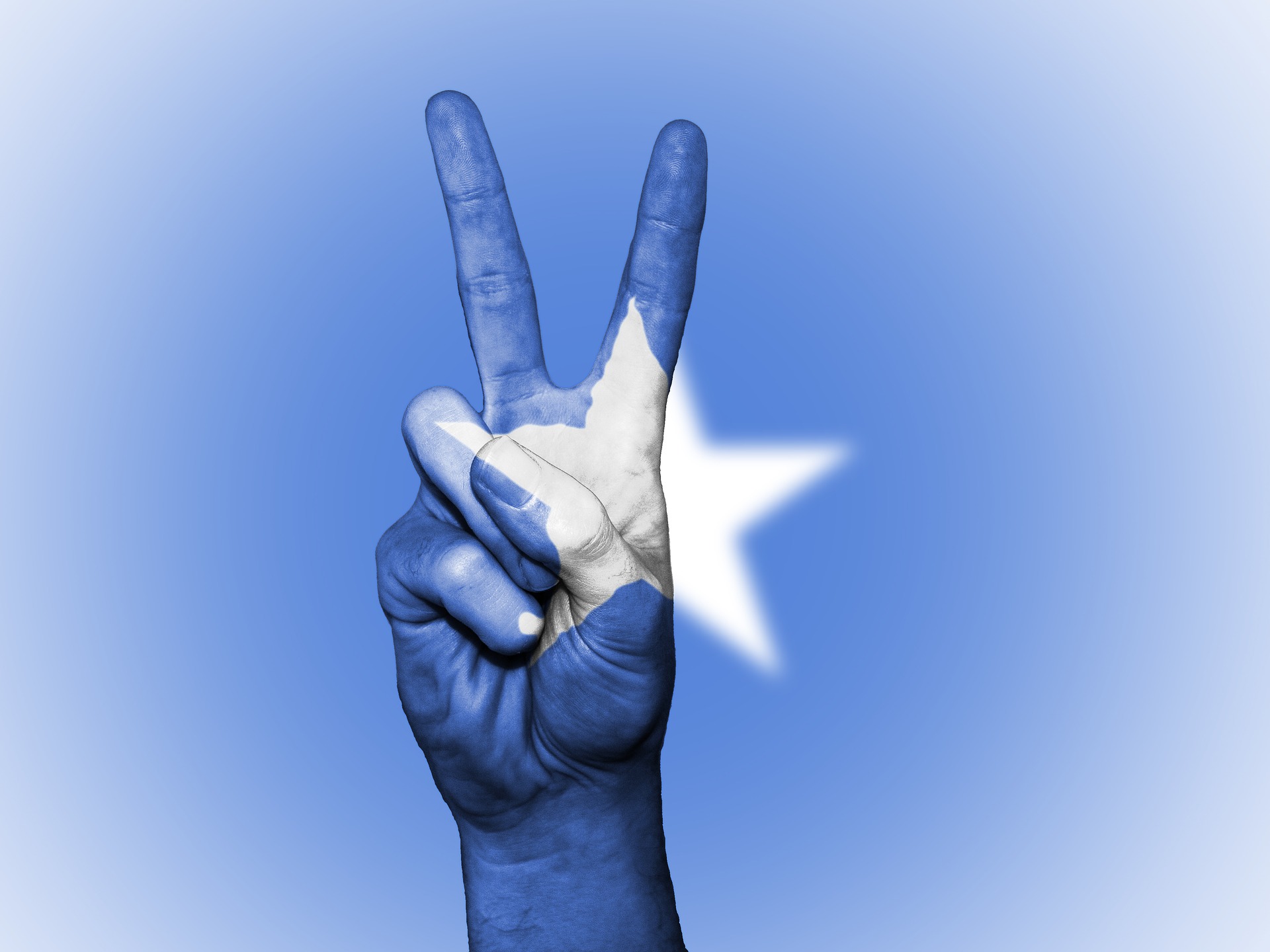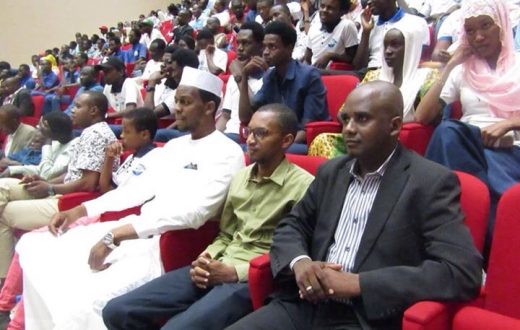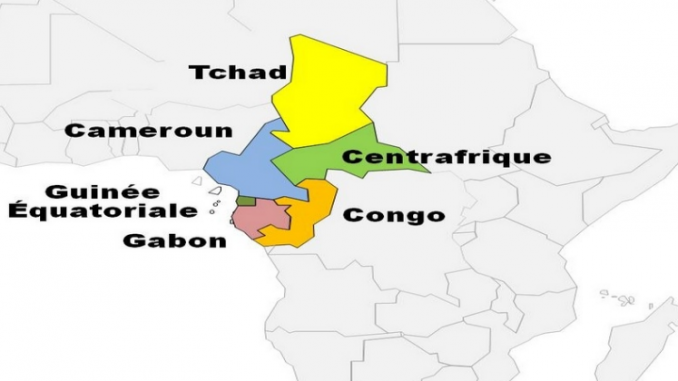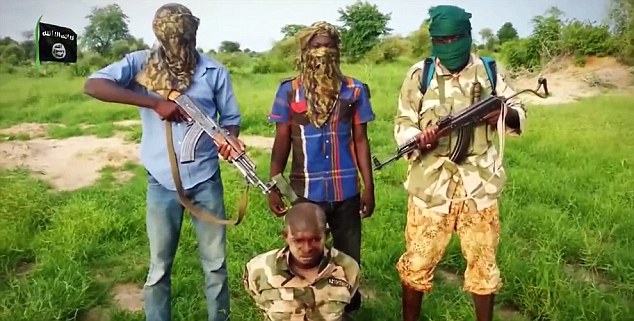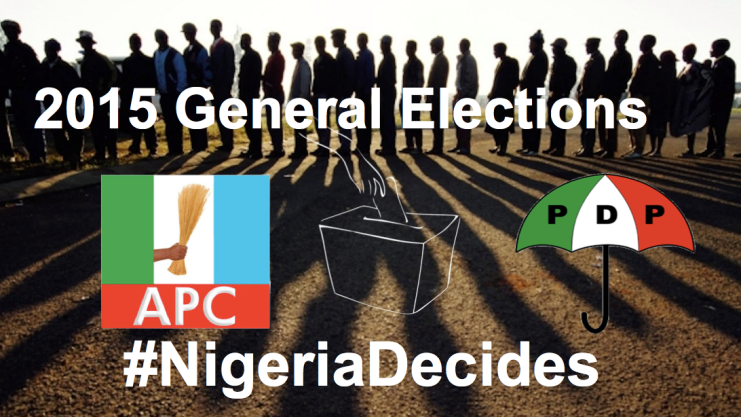Chapter 3: Somali identity and statehood

This chapter, argues that Somali identity poses a challenge to the general understanding of statehood by the “state failure” literature. This will be done using constructivist theory to analyse the impact of the defining features of Somali identity on statehood. It will contest the assumption that Western-like centralised state authority is the only effective type of statehood by explaining the Somali alternative. Somali identity is defined by a transcendent love of freedom, strong sense of unity and independence of spirit forged over the centuries (Egal, 1968, p.219). Somali identity challenges the common contemporary type of state will be divided in three sections: the nomadic tradition, the paradigm of the Greater Somalia and the clan system.
Somalia has one of the worst reputations in the world. It is constantly referred to as the embodiment of a “failed state” and it is considered a heaven for terrorist groups, like al-Shabaab and al-Qaeda, because of its structural security problems. Its homogenous characteristics make it seem extraordinary that Somalia is such a dysfunctional nation-state. Most of its population shares the same religion, language, culture and ethnicity. Smith argues that the ideal-type of nation is “a community possessing a historic territory, shared myths and memories, a common public culture and common laws and customs” (Smith, 2002, p.15). The only other country with such characteristics on the continent is Botswana, which is one of the most successful nation-state. However, while “the central state has ‘failed’ in Somalia, it would be wrong to assume that the failure of government has led to the inevitable collapse of everything else in the country” (Harper, 2012, p.106). There are many fundamental differences between the inner workings of Somalia and the ones of any common contemporary nation-state as most regions in Somalia do not fit any familiar paradigm of statehood (Ibid, p.3). This chapter aims to find an explanation for why Somalia has not been able to achieve a stable operational government. Indeed, without analysing identity formation and the relationship between interests and identities, conflicts in Somalia cannot be sufficiently understood and explained. In this respect, through constructivist theory I aim to describe how the three following aspects of Somali identity pose a challenge to statehood.
Nomadic lifestyle
Somalia is geographically an arid country, which means Somalis are in a constant battle for survival. “The vast majority of the Somali people follow their nomadic way of life not from choice but from the necessity of having continually to seek pastures for their livestock” (Egal, 1968, p.219). Due to inhabiting such an unforgiving environment, Somalis are very resilient, resourceful and enterprising. It can be argued that Somalia’s best resource is its people. Besides themselves and their clan, Somalis haven’t got much to rely on. Somali nomadic mode of life, which accounts for around 60 to 70 percent of the population, is almost unique in the world (Bradbury and Lewis, 2009, online). This is because instead of being culturally and socially isolated from the urban residents like in many other African nations, nomads are admired. Nomadic lifestyle is idealized by those Somalis living abroad or in the cities (Harper, 2012, p.21). The most venerated practice is the one of the camel herders, viewed as the finest and fiercest of all Somalis. Pastoral nomadism accounts for the economic basis of the Somali population and the “manifestations of the nomadic lifestyle and traditions pervade almost all aspects of Somali life” (Bradbury and Lewis, 2009, online).
The absolute independent character of the Somali expressed through the nomadic life has carried on through generations since pre-colonialism. Precolonial Somali society was not organized through centralized state monopoly though this should not be understood as a deficiency. There were no bureaucratic structures or class hierarchy and all inhabitants were involved in the direct production of subsistence. Moreover, colonial powers made no serious attempts to interfere with this aspect of traditional lifestyle as their interest in Somalia was mainly strategic for their economic benefit. Hence, over time “specific institutions and values of social and political order were integrally related to securing the societal reproduction of a decentralized social order based on a pastoral economy” (Jones, 2008, p.188).

Somali nomadic culture is tough, autonomous and used to travelling great distances. This has given them a head start for entrepreneurship in the current era. The long years of war with its subsequent displacement joined with the nomad lifestyle mean that efficient global communication and money transfer services are essential for Somali society. This has materialised with the development of a very advanced money transfer system, advancement in mobile phone technologies and livestock sectors, all of which are central to the Somali identity as they enable and improve the nomad pastoral lifestyle. It is paradoxical, that Dahabshiil, the largest African money transfer business, which offers banking services to businesses and international organisations, including the United Nations, World Bank and Oxfam, was founded in Somalia (Dahabshiil, 2017). This is particularly true in Somaliland, a breakaway territory still fighting for international recognition of its independent status.
On the other side, due to their rough lifestyle, nomads can easily adapt to the life of a fighter (Harper, 2012, p.23). Since the collapse of the central authority in 1991, this has been exploited by terrorist groups who profit from the structural security problems of the region. There exist consistent reports of the Islamist group Al-Shabaab recruiting fighters from the countryside or directly from the government army because during droughts or economic crisis nomads will simply fight for whoever pays the most (Ibid, p.23) On the bright side, livestock trade, which is Somalia’s most valuable commodity, has prospered since 1991. Herders have “always relied heavily on social relationships and kinship to gain access to markets” (Powell, Ford and Nowrasteh, 2008, p.8). Thus, their profession never had much to do with central authority. Economic order is possible because of the existence of a clan customary law dispute resolution systems and a non-state monetary system, based on the trade of camels, which are their most valuable commodity. Since the fall of Siad Barre dictatorship in 1991, Somali life animal trade between Ethiopia and Kenya, as well as to international markets, has noticeably increased. In “Garissa, a major export market in Kenya for southern Somali cattle, the value of cattle sales increased 600 percent and the volume of sales quadrupled from 1989 to 1998” (Little, 2003, p.91).
Greater Somalia
The current borders of Somalia were defined in the colonial period when Somali ethnos was occupied by four external powers. The British signed treaties to establish their colonies in the Gulf of Aden and what later became the Northern Frontier District of Kenya in the south. Southern Somalia was occupied afterwards by the Italians who established their sovereignty over Mogadishu and the regions of Hiran and Alta-Juba, and years later over-threw the Bogor of Mijertainia and the Sultan of Mudug (Egal, 1968, p.222). Italian occupation was characterized by their larger ambitions of colonisation which were thwarted
by emperor Menelik II of Ethiopia in the battle of Adowa in 1896 over the Ogaden. Menelik II ended up taking the Ogaden region and part of what is now the Harar Province into his Empire. Lastly, the French established themselves in Djibouti. Finally, in 1960, the Italian Somalia and the British Somalia (Somaliland) gained independence and united to form the Somali Republic. The five-pointed white star on light blue of the Somali flag symbolises “Greater Somalia” representing the five regions where Somalis reside: Ethiopia, Djibouti, Northern Kenya, Somaliland and Somalia.
Contemporary Somalia inherited two fundamental legacies from colonial occupation. First, the partitioning of the Somali ethnos left the Somali Republic in a predicament. As the only independent sovereign Somali state, it assumed the role of defending the cause of those other Somali territories still under foreign authority. Consequently, Somalia has found itself in confrontation with some of these African states (Egal, 1968, p.224). The 19th century disputes around the Ogaden region became a “central cause in the emergence of Somali nationalism and formed the basis of long-term hostilities between Somalia and Ethiopia” (Jones, 2008, p.189). Furthermore, during the Cold War, Ethiopia and Somalia became subject of proxy Cold war competition because of their strategic position. The US and USSR supplied both with arm transfers, which turned them into the largest armies in Africa. “Under Soviet support, Somalia’s military forces more than doubled in size and major imports of Soviet military hardware drained the economy” (Ibid, p.194). As a result, the “militarization of the region secured the longevity and brutality of authoritarian rule” (Ibid, p.194) and fuelled conflict for the Ogaden region that ultimately led to the Ogaden War in 1977. Moreover, American support enabled Siad Barre’s dictatorship to endure throughout the 1980s. His authority deliberately politicized and militarized clan identities because despite his anti-clan rhetoric, he privately supported the interests of his own clan, an alliance of the Darod sub-clans. This triggered hostility among clans which led to brutal repression against internal dissent. The US throughout Reagan’s presidency followed by the George H. W. Bush administration maintained economic and military support in awareness of Barre’s brutal oppression against dissident groups and the civilian population, including bombing raids in the north killing tens of thousands (Ibid, p.196).
The second legacy derived from the different colonial experiences of Southern Somalia under Italian domination and Somaliland under the British rule, which created an arrangement of uneven socio-economic development between the regions. The British chose the region of the Gulf of Aden due to its geostrategic position to trade routes with India. British interests in militarizing the Gulf for the protection of their commercial interests encouraged an economy based on the export of livestock to supply the military. The commercialisation of cattle originated in the appearance of a merchant class to control the export of livestock. Thus, creating the differentiation between the rural producers and the classes of merchants and state elites. Furthermore, “the intensification of livestock trade impoverished most of the direct producers who were also nomads” (Ibid, p.190). In the South, Italy applied a much more invasive policy of colonial expansion seeking a settler colony in Somalia. It aspired to successfully transform Somalia into a plantation economy. This meant there was an even bigger appropriation of lands by the Italian settlers and a need for even cheaper labour. “This need was met through a combination of taxation and forced labour” (Ibid, p.190). To ensure the economic transformation, they implemented institutions in rural areas and integrated clan leaders into the authoritarian executive constructions of the colonial state.
In conclusion, since European empires were built through the ideological legitimisation of imperial intervention, colonial rule entailed forms of racial ideology. The partitioning of the Somali people and the subsequent regional rivalry transformed Somali ethnicity into a fixed political identity. The imposition of hierarchical structures “froze previously fluid identities and built inequalities of power along ethnic lines into the heart of the social order” (Ibid, p.191). The division of labour and creation of a mercantile class by colonialism led to the emergence of class disparities and an economy heavily dependent on a small range of exports and external financial aid. These economic transformations were necessary for the success of global capitalism which created unequal economic structures worldwide and in the case of Somalia generated a chronic deficit in the balance of payments. The interaction of these factors is crucial in explaining the emergence of authoritarianism, elite rivalry and the following disintegration of Somali society into adverse violent conflict during the 1990s, after the final overthrow of Barre’s regime (Ibid, p.197).
The Clans
Nomadic lifestyle “carried on through many generations, has formed Somalis into family clans that stick together with fierce loyalty” (The Economist, 1999). Somali clans trace their patriarchal ancestries back to the spread of Islam from Arabia during in the middle ages. There exist five main clans in Somalia: the Hawiye, the Isaaq, the Darod, the Dir and the Rahanweyne (also known as Digil). The first three are transboundary clans; they inhabit neighbouring Ethiopia, Kenya and Djibouti as well as Somalia. This reinforces the influence of these countries on the intra-political situation in Somali, as those clans with Somali identity in other territories still feel under foreign authority. Clan identity is the foundation of Somali society, which means that “although the Somali did not traditionally form a unitary state, it is this heritage of cultural nationalism which, strengthened by Islam, lies behind Somali nationalism today” (Lewis, 2002, p.16). It is impossible to understand Somalia without acknowledging its clan organisation. It has “traditionally been the basis of the organisational and legal structure of Somali society, especially among the nomads” (Harper, 2012, p.39). Clannism lets Somalis place themselves in specific positions in a very disperse society and all aspects of social life adhere to this structure such as welfare, matrimony, peace-making and social assemblies.
However, due to the politicisation of clan identity throughout the authoritarian rule, clans structure has become a very divisive; This Somali popular proverb offers an idea of the disruptive nature on its society:
Me and my clan against the world;
Me and my family against my clan;
Me and my brother against my family;
Me against my brother. (Peterson, 2002, p.1)
The clan structure poses an obvious challenge to the imposition of a central authority in Somalia. Clans are in constant flux since membership is not permanent and alliances shift frequently. They are also very fragmented, subdividing themselves over and over until sometimes they end up with a collective of families which then differentiate themselves into their own distinct family names. Hence, the clan structure is not a stable unit. However, it is very dynamic and inherent to Somali identity which makes it infinitely adjustable to the political situation in the country. Consequently, whenever a political system is introduced it is “almost immediately transformed by the clan, which is stronger and more durable than any other form of government” (Harper, 2012, p.11). Clashes between clans occur often due to insufficient resources, clan rivalry or because of the overall insecurity in the region. However, conflict strengthens clan loyalty as it creates a stronger sense of identification since they are “the most clearly defined political unit in Somali pastoral society,” (Lewis, 2002, p.11). The only constant feature of the clans is their Islamic belief which constitutes a supra-clan locus of order and leadership.
Following the collapse of Barre’s dictatorship some distinction of a federal system based on its municipal clan organisation was becoming manifest in Somalia. Puntland still serves as an example of a legitimate functional regional polity. Stability of this autonomous quasi-state is based on membership to a single clan, which safeguards internal stability and a neutral position from central authorities (Brazhalovich, Klyuchnikov and Lukyanov 2016, p.269). Clans also serve as the basis for the judicial system and rule of law. Before Islamic extremism corrupted and took control of some regions in Somalia, the original sharia courts were “formed and controlled by a coalition of local clan elders, business people, and traditional Sufi sheikhs” (Menkhaus, 2007, p.85). The sharia courts respected Somali customs and incorporated both customary and sharia law; This hybrid judicial arrangement was accepted and effective within Somali society. The main reason for the triumphs of clan organisation is that citizens feel part of this arrangement as interests are served locally by organized rule of law and public order. On the other hand, “at higher political levels, political institutions are perceived mainly as conduits of “rents” over which the elite rule and as a potential source of political domination by one clan over others” (Menkhaus, 2014, p.166). The concept of state authority is viewed in Somali mind-set as a zero-sum game. This is because in the case of the establishment of a central government, state authority can be used for the appropriation of economic resources for their own benefit through their monopoly of the military and executive power. This kind of rule is the only experience Somalis have had so far. Thus, “it tends to produce risk-aversion and to instigate conflict rather than promote compromise, whenever efforts are made to establish a national government” (Menkhaus, 2003, p.408).
Somaliland is an example of a political system with a parliament that enables the amalgamation of elected members as well as traditional clan leaders. This hybrid voting system gives its political structure greater flexibility and more endurance than the organisation of the current Federal Government in Somalia. Moreover, it proves successful in the sense that thanks to clan incorporation Somaliland citizens feel represented by their government. Unfortunately, the application of this kind of system is unlikely since neither Somalia nor the international community recognise the state of Somaliland ever since its unilateral declaration of independence in 1991. Additionally, “Somaliland wants to have as little to do with Somalia as possible, at least in its current state” (Harper, 2012, p.139).
The clan-based logic of politics in Somalia is unlikely to disappear; it is preserved in the tradition of narrating one’s ancestry, in poetry and elsewhere (Harper, 2012, p.39). It is hugely embedded in the Somali lifestyle and provides a form of assurance, a ready social structure and trusted ties for commerce and other social transactions. An understanding of this fundamental part of Somali identity is essential. The failure of a central Somali state is mainly due to westernized elites’ attempts to “impose ill-suited European systems of governance that did not encourage political collaboration among the main clans at the grass-roots level” (Bradbury and Lewis, 2009). Moreover, Somaliland’s decision to recognize the centrality of clans and to incorporate traditional clan elders into its parliament offers an alternative that recognizes Somali identity.
Conclusion
Somali identity proves challenging for the general understanding of the state failure literature because in some aspects Somalia does not fit the general archetype of state. With the analysis of Somalia’s identity formation through the three defining aspects outlined in this chapter, this dissertation aims to shed some light on the persistent lack and rejection of centralized state institutions. First, by analysing how Somali nomadic lifestyle and the concept of the Greater Somalia explain the fact that current national borders are of little relevance to many Somalis. Their way of life is in many ways “incompatible with a formal, centralized state; they tend to ignore national borders and have their own traditional social structures and legal economic systems” (Harper, 2012, p.117). Somali reliance on social relationships and kinship expressed through the clan membership allows societal organisation. Unfortunately, colonial occupation also had a major impact on the identity formation of Somalia. The partitioning of the Somali ethnos and the consequent regional rivalry reconstructed Somali ethnic identification into a fixed political identity. It also implied the creation of unequal paths of socio-economic development between the regions. Colonial economic transformations entailed a process of class formation which accounts for current elite rivalry. Moreover, militarization of the region and financial aid secured the authoritarian rule of Siad Barre, who intentionally politicized and militarized clan identity for his own benefit. “Although dressed in the appearance of ‘traditional’ clan identities, the modern development of violent factional rivalry and competition is rooted in the social relation of the colonial and postcolonial transformations to the political economy of Somalia” (Jones, 2008, p.192). Through the analysis of the essential aspects of Somali identity this chapter demonstrates how colonial occupation infringed the natural process of state formation which consequently led to the rise of rivalry between clans and a dissenting sentiment towards the establishment of a central governing authority.
Conclusion
This dissertation has shown that to understand a social phenomenon like the Somalian crisis, its social and historical context need to be included into the analysis. This represents a shift from the State Failure theory understanding of the conflict. This literature’s reliance on a realist and neoliberal understanding of statehood based on a Weberian model leads to the association of the state as a consistent goal-oriented polity. This limits the understanding of Somalia because the state-centric logic of the theory neglects main agents of the state such as identity, domestic social organisation or a historical context. Therefore, the characterisation of Somalia as a “failed state” without an understanding of its history, identity construction and inner workings of the state offers a flawed interpretation of reality.
The nature of the inaccurate explanatory capacity of the State Failure theory resides in the use of political labels like “failure” which are unable to provide enough information about the causes or developments of the state crisis. Followed by the notion that “state failure” is provoked by internal violence and institutional weakness, which is an ahistorical understanding of state formation. And finally, the culturally specific assumptions about what a “successful” state should look like, which allows grouping together very different types of state under the common “failed state” characterisation. Western market-oriented democracies are considered the reference point for “successful” states; Accordingly, the international community has constructed a state building solution for state failure which is primarily concerned with the enforcement of liberal institutional capacity. However, through incorporating fragile states in the global capital system the neo-liberal state building approach undermines the foundations of such states. This “state failure” discourse, “in persistently mischaracterizing social conditions and misidentifying their causes, serves to legitimize and reproduce the very imperial qualities of international order which lie at the heart of so called “state failure”” (Jones, 2008, p.197). Thus, some of the literature adverse to the state failure logic advises to place the concept of “state failure” in a longer historical context dominated by imperial ideology and to recognize its role in legitimising intervention.
Moreover, as most of the literature comes from Western scholars it is argued that the “state failure” theory has a Western understanding of statehood. Alternatively, through focusing on the intersubjective meanings and social nature inherent to Somali identity, Constructivism can disregard the politics involved in the “state failure” discourse of Somalia. This dissertation argues that there is a lot to learn from the Somali way of doing things, and that there is more to the country than just a “failed state”. Claiming that instead of concentrating on the state as the main unit of analysis and blaming institutional weakness for the state malfunction, it is the process of state formation and the national identity construction which are most likely to provide an explanation of how Somali struggle was generated. Contrary to categorising state performance in terms of “failed” or “successful”, constructivist theoretical approach understands state performance along a continuum of time, accepting that violence and social struggle are part of the process. The constant process of shared social interactions constructs Somalia’s’ national identity which develops interests and guides the policies and actions of the nation-state. Therefore, to understand the central differences between the inner workings of Somalia and the ones of any other common contemporary nation-state, we must appreciate the influence of identities and interests and explore intersubjective meanings and the social construction of such.
As Lewis describes, “a hierarchical pattern of authority is foreign to Somali nomadic pastoral society which in its customary process of decision-making is democratic almost to the point of anarchy” (Lewis, 2002, p.10). Moreover, imperial intervention during colonialism and post-colonialism has led to the reconstruction of the Somali ethnic identification into a fixed political identity. Colonial economic transformations and the creation of a mercantile class originated a process of class formation which accounts for current elite rivalry. This kind of rule, which only benefits those in power, is the only experience Somalis have had so far and consequently Somalis have developed dissenting sentiment towards the establishment of a national government. “The legacy of imperial policies constitutes a major contributing factor in the global political economy of socio-political crisis in Africa today, this legacy is silenced by the “failed states” discourse” (Jones, 2008, p.199). Furthermore, despite the lack of central authority, the aspects of society central to nomadic pastoral economy, such as money transfer trade and communications, have been successful. Moreover, Somaliland is an example of the success of a hybrid political structure which gives room to the clans, essential to Somali identity, and traditional authority systems. The categorisation of “state failure” can be dangerously limiting as it overlooks the potential value of social, economic and political mechanisms peculiar to the Somali identity.
It is still possible to identify notions of the “failed state” discourse in the projection of Somalia as harbouring terrorist groups. This does not deny the existence of security problems due to the spread of terrorism; however, the Somali crisis is much more complicated and cannot be solely explained in terms of security. More than 6 million people in Somalia need humanitarian assistance and protection due to being at risk of famine and starvation. Stephen O’Brien, the UN humanitarian affairs chief, told the UN Security Council in March 2017 that “without collective and coordinated global efforts, people will simply starve to death” and “many more will suffer and die from disease” (Aljazeera, 2017). This dissertation does not deny the current disastrous structural security problems, which effect Somalia so deeply, nor does it try to diminish its relevance. Instead it aims to shed some light on the inner workings of Somalia arguing that for an effective solution to be found, it needs to be consistent with the Somali identity so that Somalis can be part of this solution.

